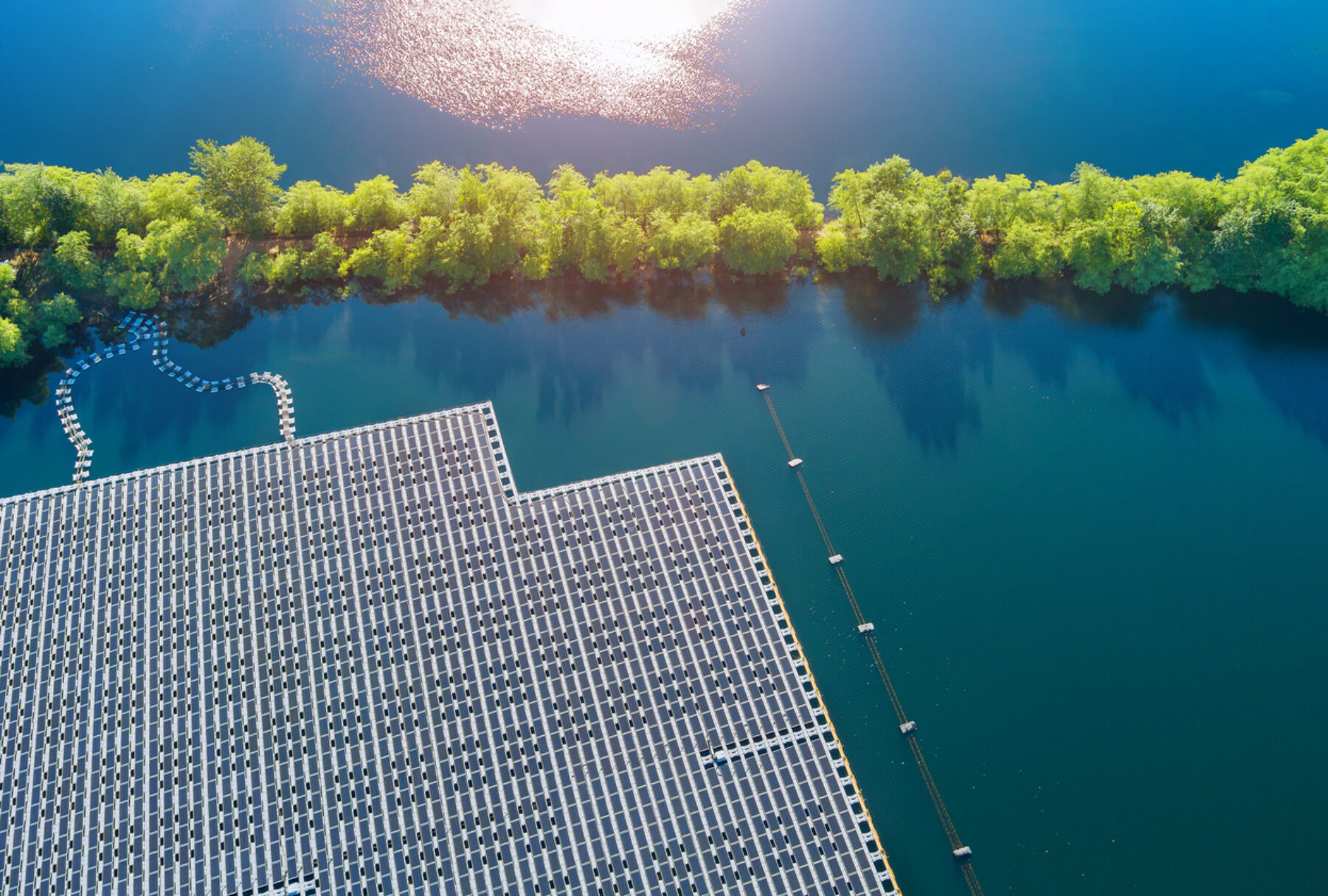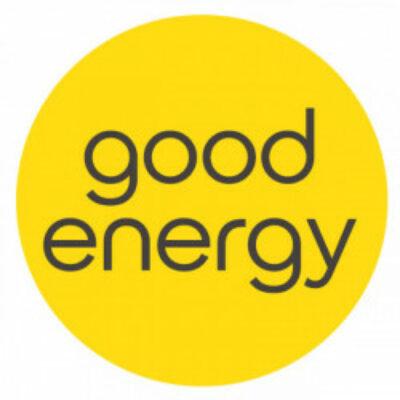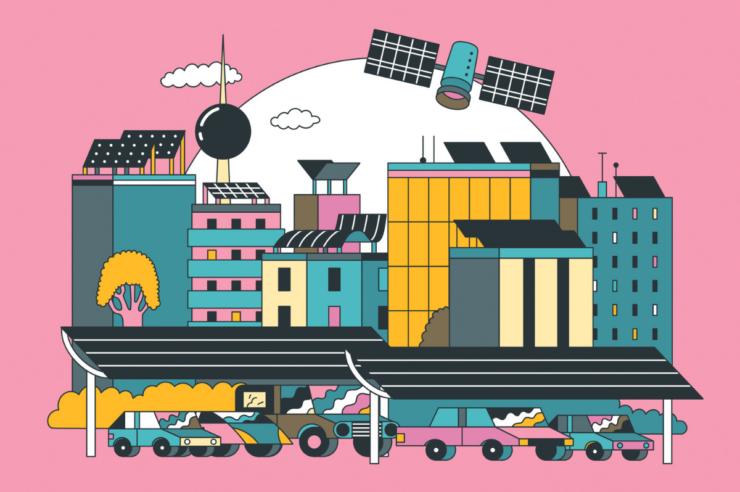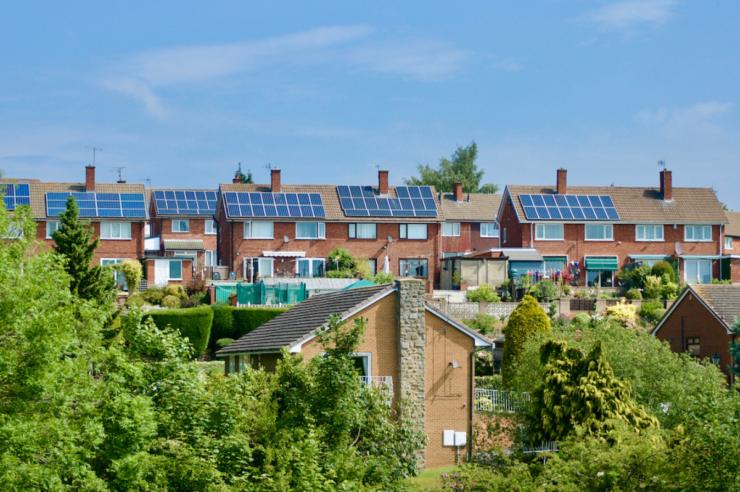The UK government is aiming for a fivefold increase in solar capacity by 2035. And yet, arrays on farmland may be banned. Here’s how floating solar could fill the gap, plus five inspirational global examples
With global solar power generation hitting record levels in 2022, the world is finally seeing the light.
In the UK, the energy crisis paired with the plummeting cost of PV panels mean small-scale installations are booming. And it’s just as well: the government is gunning for a fivefold increase in solar capacity by 2035 – up from the current 14GW to a whopping 70GW, enough to power every home in England twice over.
But the untapped potential of myriad domestic and commercial rooftops isn’t going to get us there alone, and larger-scale land-based arrays are proving a source of controversy. Industry body Solar Energy UK (SEUK) estimates that hitting our 2050 net zero targets would mean turning over as little as 0.4% of all land in the UK to solar farms. Nonetheless, the government looks set to ban arrays on agricultural land, in what critics say is a misguided effort to shore up food security.
That puts floating solar firmly in the mix for larger-scale projects. “Anyone who has dug into the numbers on reaching climate targets knows that there’s no silver bullet – we need a mix of all kinds of technologies,” says Ian McKee, communications chief at green energy provider Good Energy.
We’re seeing signs that the market – both freshwater and marine – will expand rapidly
To that end, renewables developer Trinzic has launched a campaign calling on the UK government to back 30GW of floating solar installation by 2030, through a mix of policy reform and grant incentives. It’s a big ask as just 3GW is currently installed across the globe.
“It’s ambitious but achievable,” says Trinzic’s director of renewables, Aram Wood. “We’re seeing signs that the market – both freshwater and marine – will expand rapidly from the current installed base.”
Time will tell if the idea holds water. In the meantime, here are five floating solar projects making a splash worldwide.
1. The solar array that chases the sun
Floating solar comes with loads of benefits. Siting panels on water improves efficiency by keeping them cool, and the lack of dust and dirt means they stay cleaner for longer. In the case of the 38-metre wide Proteus array on the Oostvoornse Meer lake in the Netherlands, it also makes them mobile – able to track the course of the sun as it arcs across the sky. By today’s standards, Proteus is a small array of just 180 panels, but despite its diminutive size it packs a punch, generating around 40% more energy than immoveable panels on land.

The Proteus array in the Netherlands follows the sun as it moves across the sky. Image: SolarisFloat/Protevs
2. The array powering clean water infrastructure for New Jersey
The largest floating array in the US covers some 17 acres (6.9 hectares) of the Canoe Brook reservoir in New Jersey, and its 16,510 panels supply around 95% of the power needs of a nearby water treatment plant. It’s a good example of how underutilised bodies of water can be turned into a resource for clean energy, and for locations vulnerable to drought, floating solar comes with an added benefit: it doubles as a giant parasol to prevent evaporation.

The Canoe Brook reservoir in New Jersey provides energy for a nearby power plant. Image: NJR Clean Energy Ventures
3. The bright projects energising London
Like Canoe Brook, the floating array covering 6% of the Queen Elizabeth II reservoir at Walton-on-Thames, west of London, powers water treatment infrastructure. Thames Water’s £6m, 23,000-panel installation was briefly the world’s biggest when it was built seven years ago. Experts say we can expect to see more of the same in the UK. “I know some water companies are actively looking at feasibility studies to see what they can do on significant numbers of their reservoirs,” says SEUK chief executive Chris Hewett.
In city and urban settings where land is at a premium, floating solar comes into its own. Also in the capital, plans have been mooted to power London City Airport with a floating array on the Royal Docks.
4. The Chinese clean energy hub deploying a trio of tech
Although China continues to heavily invest in coal, a clean energy boom is simultaneously taking place, putting it on track to potentially hit peak emissions within a couple of years, according to analysts. Its Dezhou Dingzhuang floating array is one example of this runaway green growth. For now, it’s the world’s largest, capable of generating 320MW of electricity. Interestingly, it’s integrated with a 100MW wind farm and a battery storage facility to make optimum use of the booster station and power line infrastructure, which feeds electricity to the grid.
It won’t hold that ‘largest’ title for long, however. Dezhou Dingzhuang is soon to be eclipsed by a new array almost twice the size that’s under construction in India.
5. The solar farm being built at sea
Prevailing technology means calm, freshwater locations have been favoured for floating solar. “But in places like Singapore, where they have very little land, they’ve been forced to do it on seawater,” explains solar expert Michael Walls, a professor at Loughborough University. The corrosive effects of salt and the choppy waves of the high seas have proved a barrier to more widespread deployment in the ocean, but that could be about to change. The world’s first ‘high wave’ solar farm at sea is to be built at the Hollandse Kust Noord wind park off the coast of the Netherlands using new ‘wave-riding’ technology. Designed to use the sea ‘directly as support, like a water lily resting on the water surface’ the array has been tested to the limit in storm conditions, with swells of up to 10 metres.
Main image: Photovs





